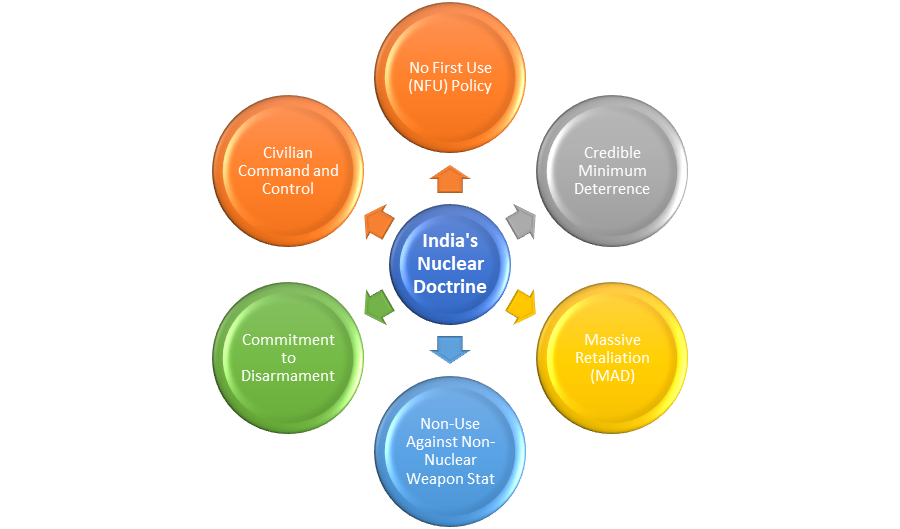Font size:
Print
Should India amend its nuclear energy laws?
Govt considering amendments to Atomic Energy Act, nuclear liability law
Context: India is actively re-examining its nuclear energy framework—specifically the Civil Liability for Nuclear Damage Act (CLNDA), 2010, and the Atomic Energy Act (AEA), 1962—with the aim of involving private and foreign players in nuclear power generation.

More on News
- This move is part of a strategy to dramatically increase nuclear capacity from the current 8 GW to 100 GW by 2047, aligning with India’s ambitious clean energy targets.
Why Amend Nuclear Energy Laws?
- Attract Private and Foreign Investment: The CLNDA’s strict liability provisions deter foreign firms due to potential legal and financial risks.
- Amending these could encourage global players like Westinghouse (U.S.) and Électricité de France (EDF) to invest and supply nuclear technology.
- Achieve Clean Energy Goals: Scaling nuclear capacity to 100 GW by 2047 requires significant investment and partnerships.
- Legal reforms are critical to unlocking these resources for India’s low-carbon energy transition.
Concerns Surrounding Foreign Investment and Liability
- Fear of Accountability: Foreign companies worry about being held liable for accidents, which could lead to substantial financial losses.
- For instance, firms like Westinghouse and Areva have avoided India’s nuclear sector due to stringent liability laws.
- Operator-Centric Liability: Current laws place full responsibility on the plant operator (e.g., NPCIL), even if foreign-supplied equipment fails, discouraging suppliers from participating.
- Historical Precedents: Past incidents like the Bhopal Gas Tragedy fuel public and political caution against reducing liability for foreign firms, emphasising the need for accountability.
How will Amendments support 100 GW Capacity?
- Enabling Foreign Participation: Aligning liability norms with international standards like the Convention on Supplementary Compensation (CSC) could attract firms like Westinghouse and EDF to Indian projects.
- Boosting Domestic Private Sector: Changes to the AEA could allow Indian companies like L&T and BHEL to contribute to reactor construction and component manufacturing.
- Promoting Small Modular Reactors (SMRs): Clear legal frameworks could attract investment in SMRs, enabling rapid capacity expansion through advanced, scalable technology.
What Are Small Modular Reactors (SMRs)?
- SMRs are compact nuclear reactors producing up to 300 MW, built in factories for easy transport and quick installation.
They feature safer designs with passive cooling and are suitable for remote areas, industrial use, and integration with renewables.
Challenges in SMR Technology Transfer
- Profit-Driven Sharing: Foreign firms share technology only if commercially viable, prioritising profits over strategic interests.
- For example, U.S. firms may limit SMR tech transfers due to intellectual property risks.
- Government Restrictions: National security and export controls restrict technology transfers.
- For instance, past transfers to China (e.g., AP1000) led to IP misuse concerns.
- Partial Transfers: Even friendly nations retain core technology, allowing only partial local production.
- For example, Russia’s Rosatom permits India to build sub-components but controls critical reactor sections
What Is the Convention on Supplementary Compensation (CSC)?
-
- The CSC is an international treaty establishing a global fund for prompt compensation in nuclear accidents.
- It assigns primary liability to operators, limits supplier liability, and ensures quick financial support through shared responsibility among member countries.
Why Is the CSC Important?
- Swift Compensation: CSC ensures rapid financial aid to victims without lengthy litigation, unlike cases like Bhopal.
- Operator Liability: It channels all responsibility to the operator, protecting suppliers unless misconduct is proven.
- Global Fund: A multi-tiered fund, including international contributions, supports countries during large-scale nuclear incidents.
Arguments For and Against Amendments
- Arguments For:
-
-
- Aligning liability with CSC norms could attract foreign suppliers and insurers, enabling reactor imports and domestic buildout.
- Private sector involvement, especially in SMRs, could accelerate capacity growth through market-driven investments.
- Amendments could foster technology transfers, boosting India’s nuclear manufacturing capabilities.
-
- Arguments Against:
-
- Liability reforms may shift risks onto citizens, potentially undermining safety and accountability.
- Global investor interest in nuclear projects remains limited, with countries like the U.S. and France not significantly expanding their own capacities.
- Unproven market appetite for nuclear investments may limit the impact of legal changes.
Policy Options and Next Steps
- Liability Alignment: Cap supplier liability at contract value and introduce time-bound recourse to align with CSC norms.
- Private Sector Role: Allow up to 26% equity in public-private nuclear ventures to involve firms like NTPC in SMR development.
- Independent Regulator: Establish a new regulatory body separate from the Department of Atomic Energy to oversee public and private nuclear activities.
- SMR Ecosystem: Utilise the ₹20,000 crore allocated in the 2025 budget for SMR R&D, targeting deployment by 2033 with foreign tech collaboration.
